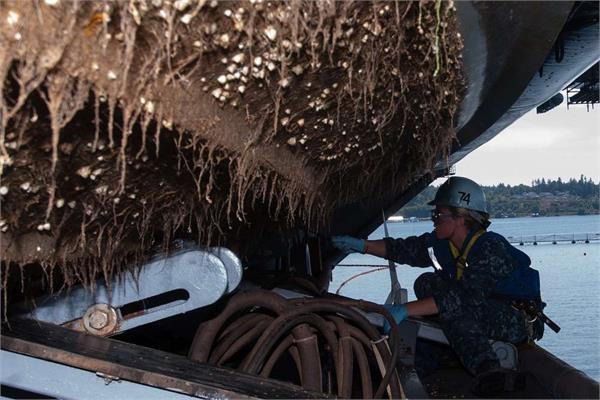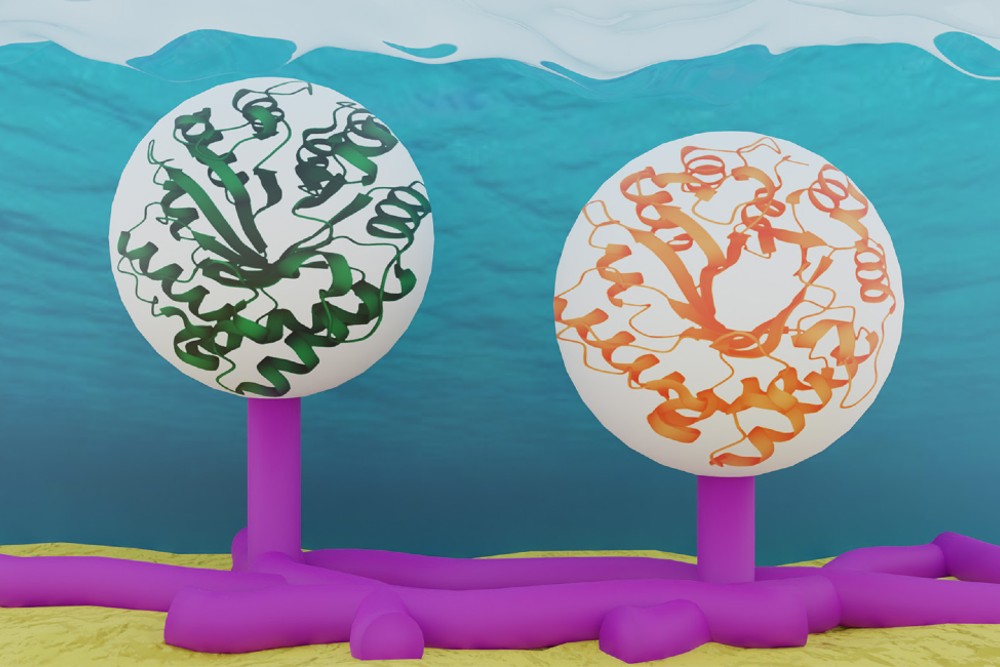
The researchers from Johns Hopkins APL presented a sustainable enzyme-based polymer coating for protecting hulls.
Taking inspiration from aquatic life, the researchers at the Johns Hopkins Applied Physics Laboratory (APL) based in Laurel (Maryland, U.S.A.) are propelling the field of bioconjugation outside the lab and onto ship hulls by developing a non-toxic and environmentally-friendly paintable protein that inhibits biofouling.
Usually, antifouling coatings slow the growth of organisms (fungi, bacteria, algae, tube worms, barnacles and mussels) on the hulls of the ships that increase drag and fuel consumption and lead to costly corrosion, but they typically rely on the toxicity of copper and small-molecule additives that act as pesticides when they leach into the seawater, destroying the aquatic life.
“Many marine animals do not want to be covered in biofouling and have developed enzymes to protect themselves. Taking inspiration from them, we developed an enzyme coating that could be applied directly to surfaces,” has explained Reid Messersmith, the molecular engineer from the Research and Exploratory Development Department (REDD) of APL that leads the project.
“Biofouling develops from bacteria settling on a surface. So, if the team could prevent small bacteria from forming, larger organisms would not follow,” has added Ryan Baker-Branstetter, the biological scientist who led the enzyme and antifouling research.
The researchers had already identified active proteins as potential non-toxic antifouling agents but, until recently, they were not able to effectively bind enzymes onto a specific location while maintaining their functionality, since they must be chemically attached to a surface to maintain their antifouling properties. In order to do so, they needed to identify an effective linker capable of bonding an enzyme to a synthetic compound.
However, the APL laboratory has now presented an enzyme-based polymer coating with an ortho-phthaldialdehyde (oPA)-based linker which is capable of rapidly bonding enzymes onto surfaces – taking less than five minutes to form a layer of material.
 A graphical abstract of the antifouling enzymes tethered to surfaces.
A graphical abstract of the antifouling enzymes tethered to surfaces.“It’s difficult to get enzymes to stick to just anything and remain active in the process. Bioconjugation is a technique to couple naturally occurring biomolecules and synthetic compounds. There have been promising laboratory results proving that certain enzymes can be attached to certain surfaces, but those results have not translated into real-world applications,” has continued Messersmith. “We wanted to create a paint bucket approach, where someone could walk up and efficiently and effectively slap the coating on a surface. The first protein we painted in 2021, red fluorescent protein, established that the chemistry behind the coating system and our linker worked. This allowed us to revisit which proteins would effectively prevent biofouling in our latest research.”
After several studies, the researchers settled on xylanase – a naturally occurring enzyme produced by fungi, bacteria, marine algae and many other organisms, often used in commercial baking–— and a mixture of lysing complex enzymes, a molecule extracted from a fungus.
The team used a method called click chemistry, which enabled them to attach the coating without any catalyst or heat. After two months submerged in artificial seawater, the xylanase and lysing complex coatings proved highly active, demonstrating the longevity of the material and its potential for eco-friendly antifouling. Additionally, the team found not only that their coatings prevented the bacteria from adhering to a surface but that they were also able to remove bacteria that had already settled.
“I have worked on a lot of projects, and typically the tenth thing you try works. But it is very rare for the first approach to work out. Having early success with the enzymes allowed us to look further into other interesting questions, such as the paints’ longevity and activity across a range of environmental conditions”, has concluded said Baker-Branstetter.